Table of Contents
- Your Shield in the Season of Sickness
- What is an Air Purifier?
- How Does It Work?
- Do Filipinos Need Air Purifiers?
- Making the Right Choice
- The Importance of Air Purifiers in Every Household: A Deep Dive into the Benefits
- Reducing Allergens: Breathing Made Easier
- Combatting Urban Air Pollution: A Shield Against the Outside World
- Protecting Against Illness: A Line of Defense
- Elimination of Harmful Chemicals: Safety First
- Odor Removal: Freshness in the Air
- Sound Sleep: A Silent Guardian
- Supporting Overall Well-being: For the Mind and Body
- Longevity of Electronics: A Surprising Bonus
- Types of Air Purifiers
- Air Purifiers vs. Humidifiers and Dehumidifiers: Navigating the Best Choice for Your Environment
- Maintenance and Care of Air Purifiers: Ensuring Prolonged Efficiency
- Selecting the Right Air Purifier for Your Needs: A Comprehensive Guide
- Common Misconceptions about Air Purifiers: Unmasking the Myths
- “Air Purifiers Can Remove All Contaminants and Pollutants.”
- “Once I Have an Air Purifier, I Don’t Need to Clean Regularly.”
- “Air Purifiers Also Work as Humidifiers.”
- “The Stronger the Fan, the Better the Purifier.”
- “If I Don’t Have Allergies, I Don’t Need an Air Purifier.”
- “All Air Purifiers Produce Ozone.”
- “The Bigger the Unit, the More Effective It Is.”
- “Filter Replacement Isn’t Essential.”
- “Air Purifiers Can Eliminate Mold Completely.”
- “If I Can’t See Pollutants, My Air Is Clean.”
- Energy Consumption of Air Purifiers: A Quick Dive
- Air Purifiers and Children: Breathing Easier
- Pets and Air Purifiers: Clearing the Air
- In Conclusion: Embracing Pure Air in Every Aspect of Life
- Key Takeaways:
- FAQs about Air Purifiers
Your Shield in the Season of Sickness
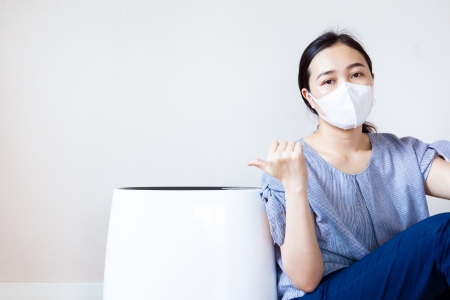
As the calendar flips, ushering in the cooler months, there’s an all too familiar guest that returns to the Filipino household—sickness.
From the sniffling noses in jeepneys to the bouts of cough echoing through the mall’s hallways, it’s evident that these days mark the season where many of us fall prey to various illnesses.
Why the surge in ailments? It’s not just the change in weather. With the rise of urbanization and the density of Philippine cities, air quality often takes a beating.
Air Quality in the Philippines
Aligned with the guidelines set by the World Health Organization, the Philippines grapples with moderately compromised air quality.
In 2020, the nation’s air quality average exceeded the WHO’s recommended value by over twofold.
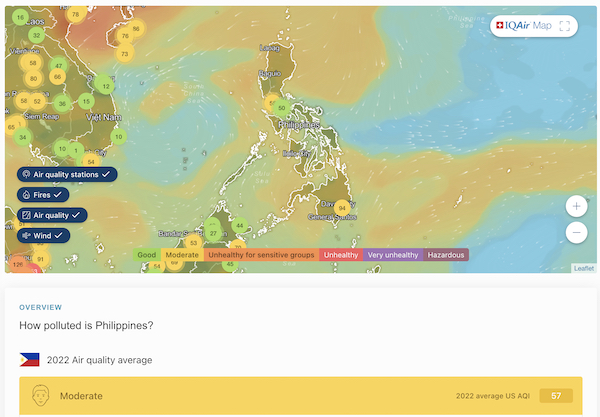
A collaborative report from Greenpeace Southeast Asia and CREA in the same year shed light on a pressing concern: air pollution, majorly from fossil fuels like coal, oil, and gas, is linked to an estimated 27,000 premature deaths annually in the Philippines.
This environmental challenge also translates to a significant economic impact, with losses amounting to 1.9% of the nation’s GDP each year.
Factor in the perennial pollution in major thoroughfares, and you have a cocktail of allergens, pollutants, and pathogens floating in the air we breathe.
Enter: air purifiers.
What is an Air Purifier?
Simply put, an air purifier is a device designed to clean the air. It does so by capturing airborne contaminants.
Depending on its design and filters, an air purifier can capture particles like dust, pollen, and pet dander, as well as harmful chemicals, gases, and even certain microorganisms.
How Does It Work?
The heart of an air purifier is its filtration system. Most air purifiers employ a series of filters, each targeting different types of pollutants.
Pre-filters
These act as the first line of defense, trapping large particles such as hair and dust. By doing so, they prolong the lifespan of finer filters that follow.
HEPA (High Efficiency Particulate Air) Filters
Certified HEPA filters are designed to capture at least 99.97% of particles 0.3 microns in diameter—think of pollen, mold spores, and certain bacteria. In the context of the Philippines where many households grapple with indoor allergens, a HEPA filter can be a game-changer.
Activated Carbon Filters
Beyond particles, our homes can harbor unpleasant odors and harmful gases, like those emitted from cooking, tobacco smoke, or household cleaners. Activated carbon filters specialize in trapping these gaseous substances.
UV-C Light
Some air purifiers come equipped with a UV-C light, which can kill certain bacteria, viruses, and mold spores as they pass through the purifier.
Do Filipinos Need Air Purifiers?
While many might associate air purifiers with colder countries or those with distinct pollen seasons, the benefits of these devices hold true even in the tropical heart of Southeast Asia.
Pollution & Traffic
Cities like Manila, Cebu, and Davao grapple with traffic congestion, leading to heightened vehicular emissions. Having an air purifier can reduce the infiltration of outdoor pollutants into our homes.
Indoor Allergens
Whether it’s mold from the rainy season or pet dander, many Filipinos suffer from allergies. Air purifiers can mitigate these triggers.
Open-Concept Living
The Filipino “bahay kubo” or nipa hut inspired the open-air living concept. While it promotes ventilation, it also means external pollutants can easily enter. Modern homes, though not nipa huts, often embrace this airy design. An air purifier can act as a safeguard.
Health Concerns
Given the current global health landscape, it’s only natural to want to fortify our living spaces against possible pathogens. While not all air purifiers are designed to capture viruses, those equipped with the right filters or UV-C lights can provide an added layer of protection.
Making the Right Choice
Not all air purifiers are created equal. If you’re considering adding one to your home, research is key.
Understand your needs. Do you have allergies? Are you concerned about the haze from vehicular traffic? Or is the smell of fried fish lingering too long in your living room?
Once you’ve identified your primary concerns, delve into the specifications. Make sure the purifier is suitable for the size of your room. Pay attention to the type and lifespan of the filters.
And remember, while an air purifier can significantly improve indoor air quality, it works best in tandem with regular cleaning and good ventilation.
In this season of sickness, as we arm ourselves with vitamins and face masks, let’s not overlook the air we breathe indoors. Investing in an air purifier could be the unsung hero in our quest for a healthier living environment.
The Importance of Air Purifiers in Every Household: A Deep Dive into the Benefits
Imagine coming home after a long day, taking a deep breath, and feeling assured that the air you’re breathing is clean, fresh, and free from most of the day’s pollutants.
That peace of mind is just one of the myriad benefits an air purifier offers.
Let’s dive deeper into why having an air purifier in every household is not just a luxury, but a necessity, especially in today’s world.
Reducing Allergens: Breathing Made Easier
Many Filipinos, both young and old, suffer from respiratory issues and allergies. Pollen, pet dander, and dust mites are typical culprits.
An air purifier efficiently captures these particles, making the environment more hospitable for those with allergies and asthma, and ensuring everyone else is less likely to develop these conditions.
Combatting Urban Air Pollution: A Shield Against the Outside World
Especially in densely populated cities in the Philippines like Metro Manila, urban air pollution is a grave concern. The smog and pollutants from vehicles and industries can find their way into our homes.
An air purifier acts as a barrier, ensuring that the air inside your home remains a sanctuary from the bustling (and often polluted) world outside.
Protecting Against Illness: A Line of Defense
Air purifiers equipped with UV-C lights or specific filters can trap or neutralize certain microorganisms, like bacteria and viruses.
By reducing these pathogens in the air, households can lower the risk of sickness, making it an especially important tool in the current global health scenario.
Elimination of Harmful Chemicals: Safety First
Households are often oblivious to the volatile organic compounds (VOCs) present indoors. These can emanate from common items like cleaning agents, paint, or even certain pressed wood furniture.
By capturing these chemicals, air purifiers safeguard inhabitants from prolonged exposure which can lead to health complications.
Odor Removal: Freshness in the Air
From the scent of last night’s adobo to the potent smell of cleaning agents, odors in Filipino households can be persistent.
Air purifiers, especially those with activated carbon filters, excel in removing these odors, ensuring that your home always smells as fresh as it feels.
Sound Sleep: A Silent Guardian
Beyond purifying, the hum of an air purifier can serve as white noise, conducive to a good night’s sleep.
Moreover, with fewer allergens and pollutants, sleep quality improves, as the body isn’t reacting to irritants.
Supporting Overall Well-being: For the Mind and Body
Clean air is not just about physical health. Breathing fresh air has psychological benefits.
Knowing that one’s environment is clean can reduce stress and anxiety, leading to a more peaceful state of mind.
Longevity of Electronics: A Surprising Bonus
Dust can be detrimental to electronic devices. By reducing the amount of dust that settles on surfaces, air purifiers can indirectly prolong the life of gadgets and appliances in the household.
Types of Air Purifiers
Air purifiers come in an array of types, each utilizing distinct technologies to cleanse the air of impurities.
As you choose the right purifier for your needs, it’s vital to understand how each technology works and the benefits and drawbacks associated with them.
HEPA (High-Efficiency Particulate Air) Filters
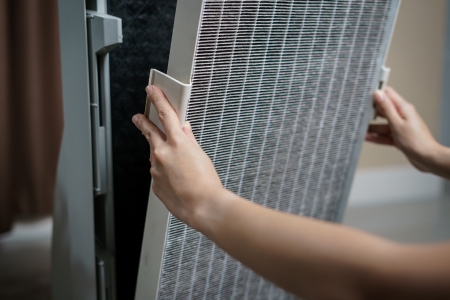
How it Works:
HEPA filters are made of a dense mat of fibers that trap particles as air passes through. To be classified as HEPA by industry standards, a filter must capture 99.97% of particles that are 0.3 microns in diameter.
Pros:
- Highly effective against dust, pollen, pet dander, and some microbes.
- Does not produce any harmful byproducts.
- Widely available and utilized in many residential and commercial settings.
Cons:
- Needs regular replacement.
- Does not remove odors or gaseous pollutants.
- Can be more expensive than some other filters.
Activated Carbon Filters
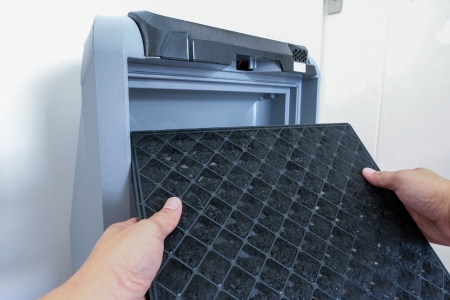
Pros:
- Excellent for removing odors, smoke, and volatile organic compounds (VOCs).
- Often used in combination with other filters for comprehensive air purification.
Cons:
- Not effective against particulate pollutants.
- Requires periodic replacement to remain effective.
Ozone Generators
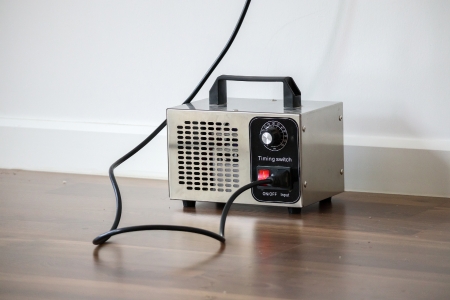
Pros:
- Can neutralize specific chemicals and odors.
- Effective against some bacteria.
Cons:
- Ozone, in high concentrations, can be harmful to the lungs and exacerbate respiratory issues.
- Not effective against particulate pollutants.
- Considered controversial due to potential health risks.
Ionic Air Purifiers
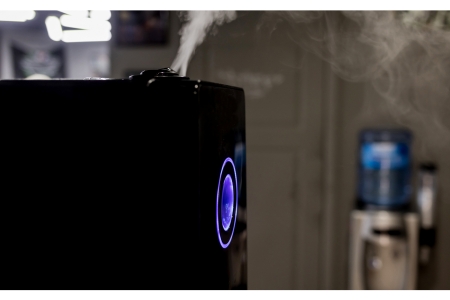
Pros:
- Quiet operation as they don’t rely on traditional fans.
- Can capture ultrafine particles that might pass through other filters.
Cons:
- Do not effectively remove odors or gases.
- Settled particles can be resuspended in the air unless cleaned.
- Some units produce trace amounts of ozone.
UV Light Purifiers
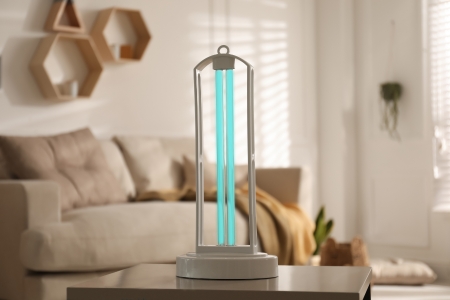
Pros:
- Effective against many microorganisms that can be harmful to health.
- Often used in combination with other filtration methods in air purifiers.
Cons:
- Only targets airborne germs, not particulates or gases.
- The effectiveness can be limited based on exposure time and light intensity.
- Bulbs require replacement over time.
In summary, each air purifier technology has its strengths and limitations. Understanding these can guide consumers in making an informed decision based on their specific air purification needs, whether they’re aiming to combat allergens, odors, or pathogens.
With a myriad of devices available to enhance indoor air quality and comfort, it’s essential to understand their specific functions and the conditions they’re designed to address.
Here’s a deep dive into air purifiers, humidifiers, and dehumidifiers, revealing their distinct differences, uses, and the situations where each shines brightest.
Air Purifiers

Function:
Air purifiers are devices designed to cleanse the air of pollutants such as dust, pollen, pet dander, smoke, and some microbes. They utilize various technologies, including HEPA filters, activated carbon, UV light, and ionic mechanisms.
Uses:
- Improving air quality in spaces with allergens or contaminants.
- Reducing odors and harmful compounds like VOCs.
- Lessening the spread of airborne pathogens.
Best For:
- Households with allergy or asthma sufferers.
- Spaces frequented by smokers.
- Homes in areas with high outdoor pollution or pollen count.
Humidifiers
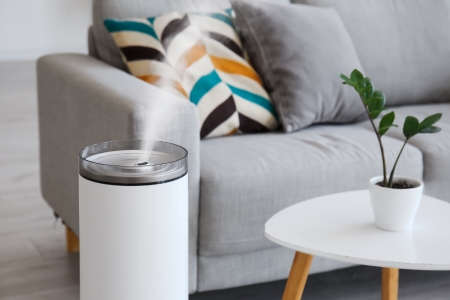
Function:
A humidifier is a device that adds moisture to indoor air, effectively increasing its relative humidity levels. It is particularly beneficial in environments where the air tends to be dry, such as in air-conditioned spaces or during winter months. By maintaining optimal humidity levels, humidifiers can alleviate symptoms related to dry skin, sinus congestion, dry throat, and respiratory irritations, as well as help preserve wooden furniture and musical instruments.
Uses:
- Preventing dry skin, throat, and respiratory symptoms.
- Protecting wooden furniture and musical instruments from cracking.
- Reducing static electricity in the environment.
Best For:
- Areas with dry climates or cold seasons where indoor heating can reduce humidity.
- People with respiratory conditions that are aggravated by dry air.
- Spaces housing sensitive equipment or items that can be damaged by low moisture levels.
Dehumidifiers

Function:
Opposite to humidifiers, dehumidifiers extract excess moisture from the air. This helps in preventing mold growth, dampness, and maintaining a comfortable indoor atmosphere.
Uses:
- Combatting mold, mildew, and dust mites.
- Reducing dampness in basements, bathrooms, or rooms with poor ventilation.
- Preserving the structural integrity of homes by preventing water damage.
Best For:
- Humid climates or during rainy seasons when indoor moisture levels rise.
- Spaces with evident moisture problems like moldy walls or musty odors.
- Households with members sensitive to mold or dust mites.
Decision-making Insights
If you’re battling allergies or airborne contaminants, an air purifier is the go-to. If the air in your space feels overly dry or you experience static shocks frequently, a humidifier might be the solution.
On the other hand, if you notice condensation on your windows, musty smells, or mold spots, a dehumidifier should be your pick.
In some scenarios, a combination of these devices might be beneficial. For instance, in a basement with moisture issues but also a dust problem, both a dehumidifier and an air purifier can work hand in hand to create a healthier environment.
Understanding the fundamental functions and benefits of air purifiers, humidifiers, and dehumidifiers ensures that you can create a comfortable, safe, and health-optimized indoor space tailored to your specific needs.
Maintenance and Care of Air Purifiers: Ensuring Prolonged Efficiency
While investing in an air purifier is a significant step towards creating a healthier indoor environment, maintaining its optimal performance is equally crucial. A well-maintained air purifier ensures effective air filtration, safeguarding the health and comfort of those within the household.
Here’s a comprehensive guide on the maintenance and care of air purifiers.
Understanding Filter Lifespan and Replacement
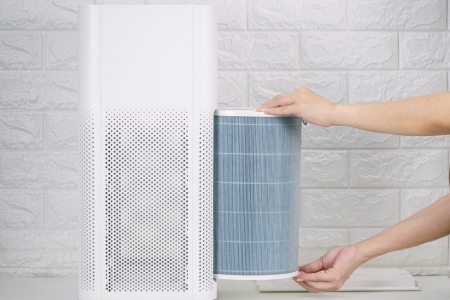
The cornerstone of an air purifier’s function is its filter system, which is why understanding its lifespan and replacement needs is paramount.
1. HEPA Filters:
- Lifespan: Typically, HEPA filters last between 12 to 18 months, but this can vary depending on usage and air quality.
- Replacement Signs: A noticeable decrease in airflow, an increase in noise, or a visible darkening or clogging of the filter.
2. Activated Carbon Filters:
- Lifespan: Generally, these filters last anywhere from 6 months to a year.
- Replacement Signs: A reduced ability to remove odors or a saturated smell coming from the purifier can indicate it’s time for a change.
3. UV Bulbs:
- Lifespan: Most UV bulbs have a service life of 12 months, though they might still emit light after this period. However, their effectiveness at neutralizing germs diminishes over time.
- Replacement Signs: Dimming of the bulb or a decline in the purifier’s ability to combat microbial contaminants.
4. Pre-Filters:
- Lifespan: These can be cleaned and reused multiple times, but ideally, they should be replaced every 3 to 6 months.
- Replacement Signs: Visible accumulation of dust or debris and a decreased efficiency in capturing larger particles.
Cleaning and Maintaining for Optimal Performance
1. Exterior Cleaning:
- Frequency: Once every two weeks.
- Method: Use a damp cloth to wipe down the outer surface of the purifier, ensuring it’s unplugged before cleaning. This helps prevent dust accumulation, which could eventually get sucked into the device.
2. Interior Cleaning:
- Frequency: Every 1-3 months, depending on usage.
- Method: After unplugging the unit, open the device and gently vacuum or brush any dust or debris from the inside surfaces. This helps the purifier run more smoothly and reduces the strain on the filters.
3. Sensor and Vent Maintenance:
- Frequency: Every 6 months.
- Method: Some air purifiers come with air quality sensors. Use a soft brush to gently clean these sensors. Additionally, ensure vents are unblocked and free of debris to maintain efficient airflow.
4. Regularly Check Filter Indicators:
Most modern air purifiers have filter replacement indicators. Keep an eye on these, as they provide a convenient cue for when a filter change is due.
5. Positioning:
Place the air purifier in a location where it’s not obstructed by furniture or curtains. Proper placement ensures efficient air circulation.
While air purifiers are robust devices designed to run for extended periods, their longevity and performance are heavily influenced by how well they’re maintained.
Regular cleaning, timely filter replacements, and general care practices can ensure that your purifier remains a potent ally in your quest for cleaner indoor air.
Selecting the Right Air Purifier for Your Needs: A Comprehensive Guide
An air purifier’s efficacy isn’t just about its technology but also its suitability for the specific conditions of your space and needs.
With a myriad of options available in the market, making the right choice can feel overwhelming.
This guide aims to simplify the process, ensuring you invest in an air purifier that genuinely meets your requirements.
Understanding Room Size and Air Change Rate
- Room Size:
Simply put, an air purifier should match the size of the room you intend to use it in. Each purifier has a “coverage area” specification, usually mentioned in square feet or meters, indicating the size of the room it can efficiently clean.
Method:
Measure the length and width of your room and multiply them to get the area. When shopping, ensure the purifier’s coverage area matches or exceeds your room’s size.
- Air Change Rate (ACH):
This denotes how many times an air purifier can clean the entire volume of air in the specified room size per hour. - For instance, an ACH of 4 means the air will be purified every 15 minutes. A higher ACH indicates more frequent air purification, which can be particularly beneficial for those with severe allergies or respiratory conditions.
Factors to Consider When Selecting an Air Purifier
- Allergies and Respiratory Concerns
If someone in your household suffers from allergies, asthma, or other respiratory issues, consider a purifier with a True HEPA filter. These are certified to capture 99.97% of particles as small as 0.3 microns, including pollen, dust mites, and many bacteria.
- Pets:
For homes with furry friends, pet dander, hair, and odors can be a concern. Look for purifiers that combine a HEPA filter (to trap dander) and an activated carbon filter (to neutralize odors). Some purifiers are even marketed specifically for pet owners, offering specialized filters or features.
- Region-Specific Concerns:
If you live in an area prone to wildfires, for example, you’d need a purifier proficient in removing smoke particles. Alternatively, if you reside in a city with high pollution levels, ensuring your purifier can combat common pollutants like VOCs is essential.
- Noise Level:
If your purifier will be operating in a bedroom or study, its noise level might be a significant concern. Check the decibel (dB) rating—lower numbers indicate quieter operation.
- Energy Consumption:
An air purifier running round the clock can impact your electricity bill. Opt for devices with an Energy Star rating, ensuring they’re energy-efficient.
- Additional Features:
Modern air purifiers often come with added features like air quality indicators, Wi-Fi connectivity for app controls, filter replacement alerts, and multiple fan speeds. While these can enhance convenience, consider if they’re crucial for your needs and worth the additional cost.
- Budget:
While it’s essential to invest in a quality purifier, there’s a broad price range available. Determine a budget beforehand, but ensure you’re not compromising crucial features for cost.
While the quest for the right air purifier may seem daunting, understanding your specific needs and the fundamental aspects of these devices can significantly streamline the selection process.
Whether combating allergens, pet concerns, or regional air quality issues, a well-chosen purifier can be a game-changer for your indoor environment.
Common Misconceptions about Air Purifiers: Unmasking the Myths
Air purifiers have grown in popularity, promising cleaner indoor air and relief from various allergens and pollutants.
However, with increasing use comes a slew of myths and misconceptions. In the interest of informed choices, let’s address and debunk some of these common misunderstandings.
“Air Purifiers Can Remove All Contaminants and Pollutants.”
Truth: While high-quality air purifiers are effective in removing a vast majority of airborne contaminants, no single purifier can eliminate 100% of all pollutants.
For instance, gases like radon, carbon monoxide, and certain volatile organic compounds (VOCs) may not be fully captured by standard purifiers.
“Once I Have an Air Purifier, I Don’t Need to Clean Regularly.”
Truth: An air purifier complements regular cleaning but doesn’t replace it. Vacuuming, dusting, and other cleaning activities help reduce the number of pollutants, making the air purifier’s job more manageable and more effective.
“Air Purifiers Also Work as Humidifiers.”
Truth: While there are combination units available that purify and humidify, not all air purifiers can adjust humidity levels. Each device serves a distinct purpose: purifiers clean the air, while humidifiers adjust moisture levels.
“The Stronger the Fan, the Better the Purifier.”
Truth: While airflow plays a role in how effectively the air is cycled through the purifier, it’s the filter quality and type that primarily determine pollutant removal efficacy. A high-powered fan with a subpar filter won’t deliver the desired air purification.
“If I Don’t Have Allergies, I Don’t Need an Air Purifier.”
Truth: While individuals with allergies can benefit significantly from air purifiers, they also help in removing smoke, external pollutants, and some pathogens, contributing to a healthier living environment for everyone.
“All Air Purifiers Produce Ozone.”
Truth: Only certain types of air purifiers, specifically ozone generators, intentionally produce ozone. Many others, like HEPA and activated carbon filters, don’t produce ozone.
Some ionizers might release minimal amounts, but quality units are designed to keep this within safe limits.
“The Bigger the Unit, the More Effective It Is.”
Truth: Size doesn’t always equate to efficiency. The effectiveness of an air purifier depends on its filter quality, air change rate, and suitability for the room size, not just its physical dimensions.
“Filter Replacement Isn’t Essential.”
Truth: Filters trap pollutants, and over time they get saturated. Failing to replace or clean filters not only reduces the purifier’s effectiveness but can also release trapped pollutants back into the room.
“Air Purifiers Can Eliminate Mold Completely.”
Truth: Air purifiers can capture airborne mold spores, but they can’t eliminate mold growth on surfaces. For comprehensive mold removal, the source of moisture and mold must be addressed directly.
“If I Can’t See Pollutants, My Air Is Clean.”
Truth: Many harmful pollutants, including certain VOCs, bacteria, and ultrafine particles, are invisible to the naked eye. Just because the air seems clear doesn’t mean it’s pollutant-free.
By debunking these misconceptions, we not only understand air purifiers better but can also harness their potential more effectively. An informed approach ensures that expectations align with reality and that we optimize our indoor air quality without misconstrued beliefs clouding our judgment.
Energy Consumption of Air Purifiers: A Quick Dive
Air purifiers have become household essentials, but what’s their energy toll? Here’s a brief on their power dynamics:
- Power Play: Larger purifiers consume more energy, but usage frequency and settings significantly sway the consumption scale.
- Efficiency Matters: Look for Energy Star-certified models. They promise effective purification with less energy, benefiting both the planet and your pocket.
- Smart Features = Smart Savings: Many purifiers have sleep modes, timers, and sensors that adjust to air quality. These not only ensure optimal purification but also prevent unnecessary energy usage.
- The Bigger Picture: While purifiers do add to electricity bills, choosing energy-efficient models and using them wisely can minimize the impact.
In essence, while air purifiers do consume energy, informed choices and smart usage can make their operation both effective and eco-friendly.
Air Purifiers and Children: Breathing Easier
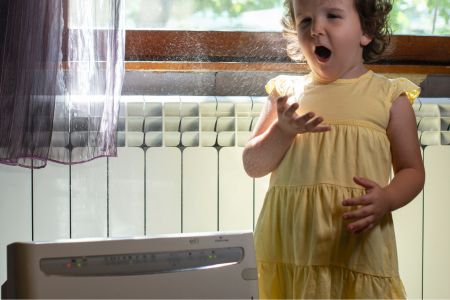
- Benefits for Little Lungs:
- Allergy Alleviation: Air purifiers can significantly reduce allergens like pollen, dust mites, and pet dander, offering relief to children with allergies.
- Respiratory Relief: For kids with asthma or other respiratory challenges, these devices can be game-changers, filtering out triggers like smoke and certain pollutants.
- Picking the Right Purifier for Kids’ Rooms:
- Quiet Operation: Children need uninterrupted sleep. Opt for a model that’s silent or has a soft white noise feature.
- Filter Factor: Choose purifiers with HEPA filters; they’re top-notch in trapping tiny particles harmful to children.
- Safety First: Ensure the purifier has no small parts or sharp edges, and it’s stable enough to avoid toppling over.
Air purifiers can be a breath of fresh air for children’s health, especially for those with allergies or respiratory concerns.
However, when choosing one for a child’s room, specific considerations ensure their safety and comfort.
Pets and Air Purifiers: Clearing the Air
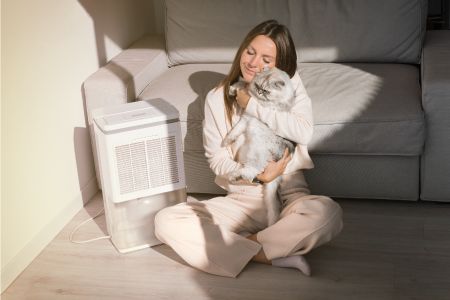
- Battling Pet Pollutants:
- Dander Destroyer: Air purifiers excel in capturing pet dander—tiny flecks of skin shed by cats, dogs, and other furry friends—which can be problematic for allergy sufferers.
- Hair Havoc: Beyond just dander, purifiers can also help minimize the spread of pet hair that invariably floats around pet-friendly homes.
- Odor Overcome: Love your pet but not the smell? Air purifiers can neutralize those stubborn pet-related odors, ensuring a fresher home ambiance.
- Perks for Pet Enthusiasts:
- Allergy Alleviation: For households with allergy-prone members, an air purifier can be the bridge between loving a pet and living comfortably, reducing common allergic triggers.
- Cleaner Living: Even without allergies in the picture, purifiers enhance overall air quality, making the environment healthier for everyone—two-legged or four.
In Conclusion: Embracing Pure Air in Every Aspect of Life
Across different scenarios—be it ensuring the health of our children, coexisting with our beloved pets, or simply aiming for a cleaner living environment—air purifiers have emerged as vital tools.
From capturing minute particles that trigger allergies to neutralizing odors that disrupt our comfort, these devices offer multifaceted advantages. Whether it’s the soft breathing of a child in sleep, the playful antics of a pet, or just the peace of mind knowing the air in your home is clean, the benefits of air purifiers resonate deeply.
In this modern age, where indoor air quality often suffers, investing in a good air purifier is a proactive step towards health, comfort, and overall well-being.
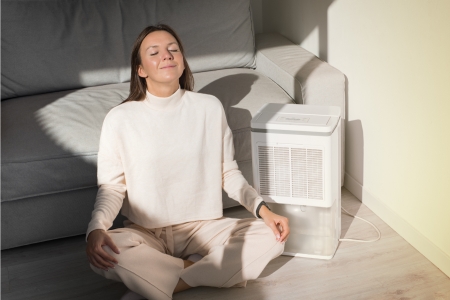
Key Takeaways:
- Health and Well-being: Air purifiers greatly benefit individuals with allergies and respiratory issues, especially children, by filtering out allergens and pollutants.
- Pets and Cleanliness: They effectively combat challenges introduced by pets, including dander, hair, and odors, making coexistence more harmonious.
- Energy Efficiency: Modern air purifiers come equipped with features that optimize energy use, ensuring eco-friendly operation.
- Selection Nuances: When selecting an air purifier, considerations like noise level, filter type, and safety play crucial roles, especially in children’s rooms.
- Enhanced Living Quality: Beyond specific use-cases, air purifiers elevate the overall indoor air quality, promoting a healthier living environment for everyone.
FAQs about Air Purifiers
Remember, the effectiveness of an air purifier depends largely on its type, size, and the specific needs of the environment it’s used in. Always refer to product specifications and reviews when considering a purchase.